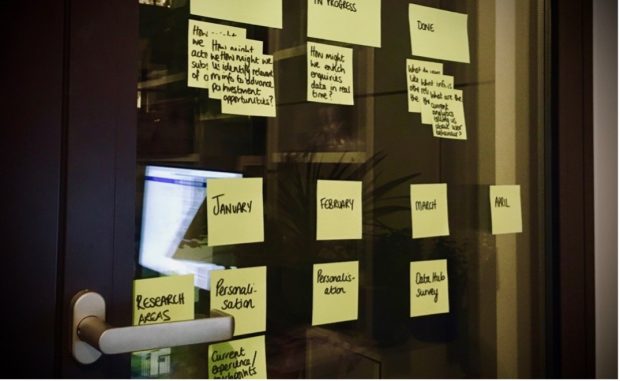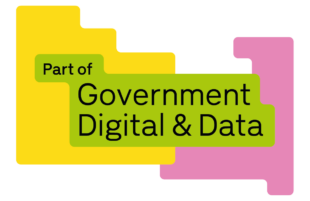
Most people are initially surprised when we say we’ve built an in-house Customer Relationship Management (CRM) system called Data Hub. We’ve been developing it iteratively over the last 2 years, through the GDS product lifecycle, to meet our bespoke Department for International Trade’s (DIT) user needs.
We are now more mature and can take the opportunity to embed continuous Discovery into our product practices. There we can evolve and refine our ideas to continuously improve our CRM capability.
We are moving into a space where we use rapid experiments with our live system to build our knowledge of our data, our users and their needs. We can then turn that user data into better product decisions to enable our users to make sense of DIT’s data.
Phase 1: Use (re)Discovery to set new goals and ambitions
In the summer of this year, we took a fresh look at our CRM Product Strategy. We spent some time going over research insights from the last 2 years as well as undertaking new research and market analysis.
What we learned through (re)Discovery was that there were some key problem areas for us to explore in more detail. We would need to address them whether we built bespoke or customised something off-the-shelf in the future.
This included making better use of what DIT already knows and bringing more consistency to our business processes. We also saw opportunities to be more data-driven in our designs to present relevant information to our users, and in the day-to-day decisions those users have to make.
Phase 2: Kick off some Alpha projects in parallel to our development practices
As we concluded our Discovery, we knew we wanted to rapidly test and learn from some experiments to help us evolve our thinking in those problem areas. We started some experiments we might think of as Alphas, even though our CRM platform is not in a classic GDS ‘Alpha phase’ of product development.
For example, we have been experimenting to understand the business value of new data streams, the technical feasibility of integrating them into our CRM platform, and their suitability for analysis using data science techniques. And we have been building design-driven hypotheses about user behaviour, that we can test and refine as we try new ways of joining up DIT’s collective knowledge. This is something the great.gov.uk team have also been exploring.
Phase 2b: Understand that product adoption is as important as product development
We work in an Agile way, one part of which means we’re very open to changing direction as we learn more – and we’re learning lots. But that is not always the most stable way for us to deliver new and improved capability to our users. We have also invested time into building out a framework for releasing and testing new ideas in a controlled way, to smaller groups of users. How and when we choose to use this depends on how big a bet we want to place on our new designs, and if we think they are ready to be tested in the wild.
We know that building the thing right is only half the battle. Launching great products requires deep thinking about how to encourage users to adopt new features and ways of working. For our internal product landscape, that’s about getting the business change right.
Business change for us is what marketing is for commercial tools. We are very lucky to work with a small but perfectly formed Engagement and Strategic Adoption team. They have done great things recently helping us raise the profile of new ways we’ve been meeting user needs and making sense of the feedback.
But it is not about selling the product so much as it is about deeply understanding user needs and contexts. We have designed the right business processes in the first place, built buy-in, and provided guidance so users understand what we expect of them.
Phase 3: Move from parallel to continuous Discovery and experimentation
There are lots of opportunities for us to use our own data better in the future. We have always used performance analytics to track product adoption. We are now putting our usage data at the heart of our product adoption campaigns. And we have the potential to apply more data-driven research methodologies to help us understand behaviour across a large, geographically disparate user base.
We are also thinking about how we align our product teams to particular kinds of problems. This will give us the scope to embed continuous Discovery in the way we approach user needs over the long-term.
We will do that in part by using our own user data to make sense of how DIT collects, categorises and consumes its CRM data. And we will take everything we’ve learned about conducting product experiments into how we approach problems of all shapes and sizes in the future.
Learn about other products and projects we’re working on in the Data team Digital, Data and Technology (DDaT) at DIT.

